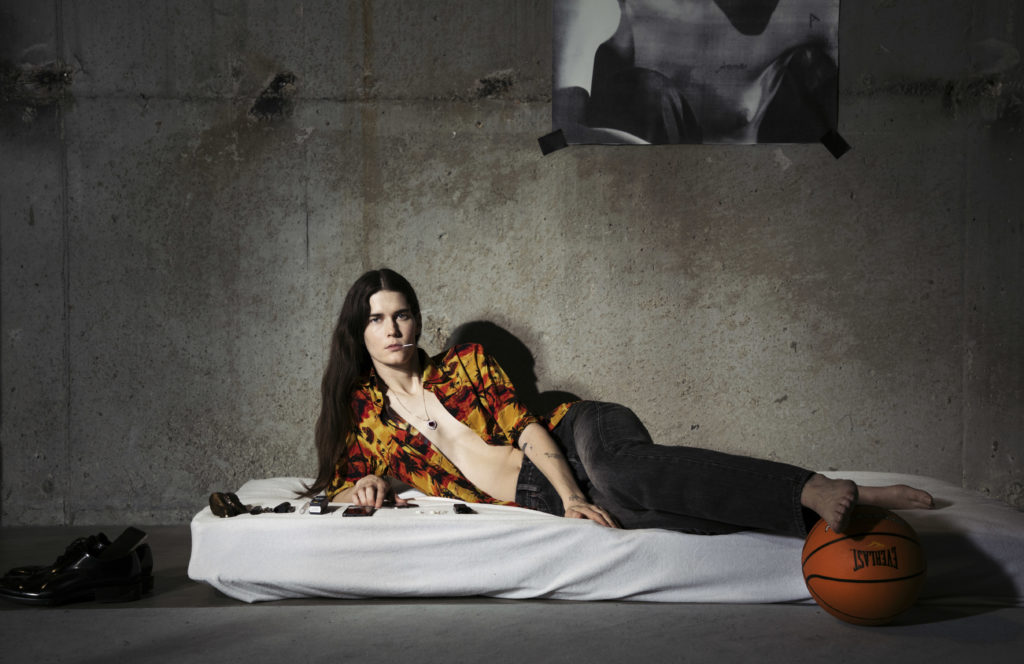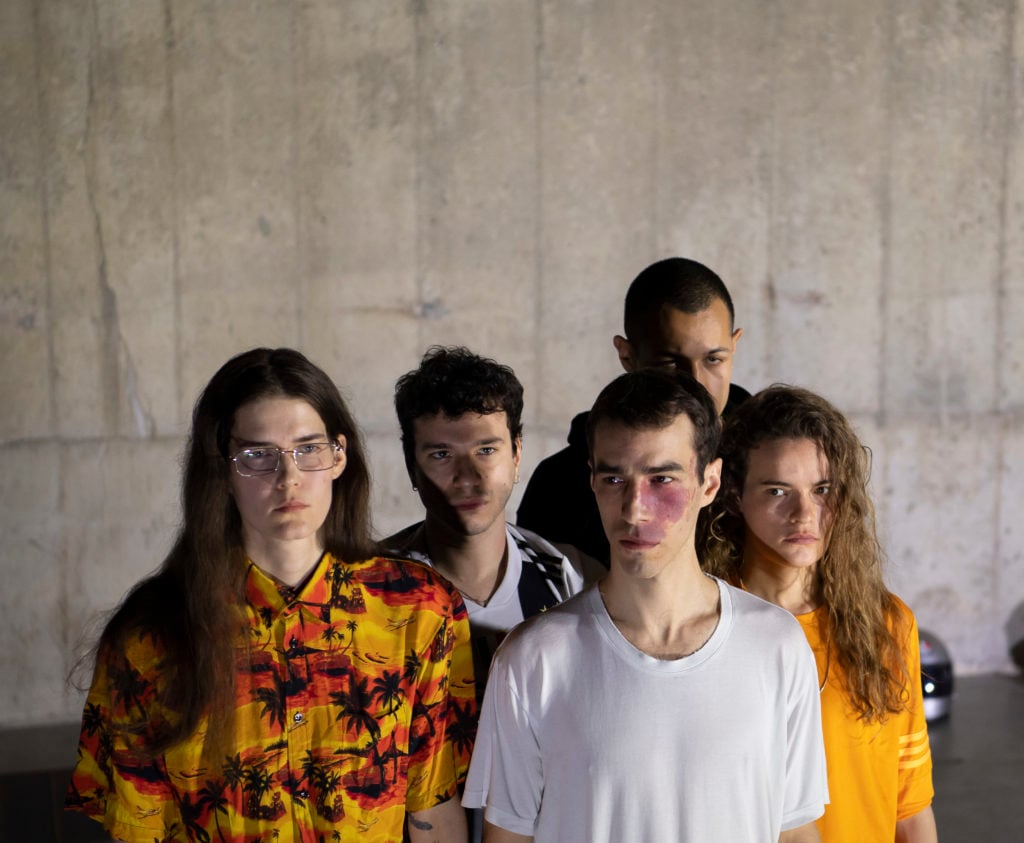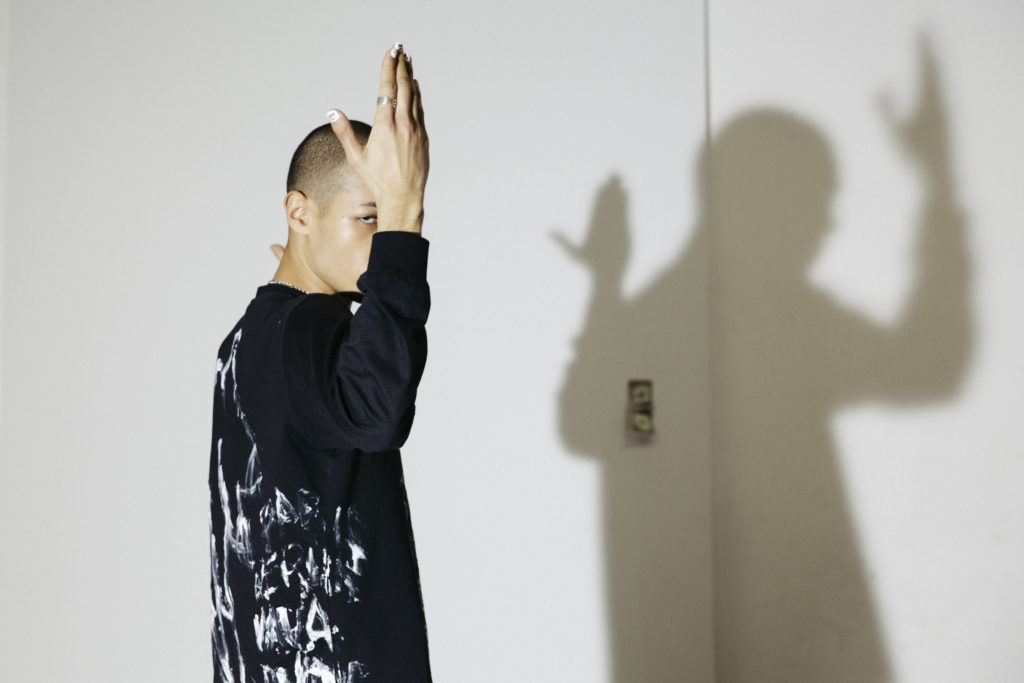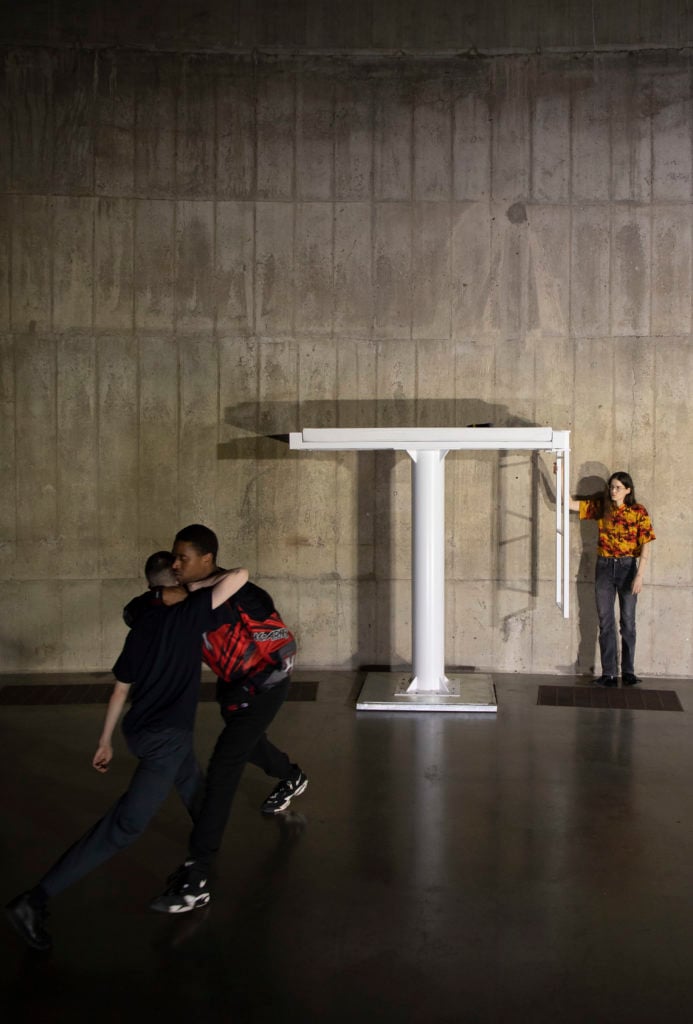Reviews
Performance Art Star Anne Imhof Brings Violence, Desire, and Flaming Flowers to London’s Tate Modern
After winning the Golden Lion at the 2017 Venice Biennale, the German artist returns to the limelight with the four-hour opus 'Sex.'

After winning the Golden Lion at the 2017 Venice Biennale, the German artist returns to the limelight with the four-hour opus 'Sex.'

Lorena Muñoz-Alonso

Two years ago, Anne Imhof’s sensational Faust won her the Golden Lion at the Venice Biennale. Now the Imhof phenomenon has arrived in London.
Sex, as the new opus is called, is premiering at London’s Tate Modern with a short run of only five evening performances between March 21 and 31. The limited availability of the four-hour opus has contributed to the furore: Tickets were sold out weeks before the event (although some more have been released subsequently).
This marks Imhof’s first major presentation in the UK capital. It is therefore the first shot for viewers who didn’t catch her much-talked-about previous outings in Basel, Berlin, Venice, and New York, to experience the German artist’s epic live works and the recurring cast of charismatic yet intimidating dancers, models, and musicians that populate them—including Eliza Douglas, Bill Bultheel, Mickey Mahar, Lea Welsch, Jakob Eilinghoff, Frances Chiaverini, and Josh Johnson.
If you are familiar with the previous work, there’s not a lot new to Sex that wasn’t present in some shape or form in Faust or Angst. The overall structure remains the same: a loosely choreographed durational composition punctuated by several set pieces of music, singing, dance, and movement that recur, fugue-like, as commanded by Imhof, who walks across the spaces and among the crowds relatively inconspicuously in a red Balenciaga cap, giving orders to her performers via text message.
What is new about Sex is its location at the Tate Modern Tanks: two massive industrial round spaces with two smaller adjacent rooms, all made of concrete, that feel like the perfect fit to host Imhof’s confrontational live art, but also to display her sculptural installations and gradient paintings. These pieces remain on view in between performances as a more conventional type of exhibition, and are testimony of the command that Imhof has of traditional media.

Performance view of BMW Tate Live Exhibition: Anne Imhof: Sex at Tate Modern 2019. © Tate Photo by Oliver Cowling.
At the press preview, Imhof said she titles her works for the associations they might elicit rather than to suit a particular conceptual stance. In naming the work Sex, the artist explained that she was less interested in the erotics of intercourse than the violence or impact it can have on someone.
This stance certainly comes across in the piece, where the performers move in Imhof’s signature zombie-like state, mingling with each other and entering interactions in which heightened states of aggression, desire, and tenderness are barely contained, and are sometimes enacted simultaneously. In one of the most arresting moments, towards the second half, the performers take several bouquets of dry roses and set them on fire, brandishing the blazing flowers to each other or to the audience, which is liable to recoil at the proximity of real fire in a museum, of all places, particularly in the hands of these unreliable actors.
Moments of incongruity such as these abound. In between scuffles, gothic singing, aloof waltzes, and headbanging, the performers dance a sort of deranged baroque minuet, spinning on their feet, arms raised. They wear a mix of normcore chunky trainers, trailer trash t-shirts, and grunge athleisure gear. Vintage-looking items overlap with luxury brands like the aforementioned Balenciaga—whose runway shows and campaigns are regularly fronted by the performer and artist Eliza Douglas, Imhof’s partner.
The connection seems to irk some people, who complain of how fashionable her work is, how du jour the aesthetic of the performers is. They say the work is, in itself, fashion (as if fashion couldn’t be art as well, and vice versa).
Such comments puzzle me no end, as it seems obvious by now how the worlds of art and fashion have collided in the last two decades, entering a highly profitable, highly visible marriage that can hardly be denied. To criticize Imhof on the basis of her relationship to the fashion world is to ignore her ability to both enjoy and question said state of affairs, to bring it to the fore and use it as compelling raw material, teasing out the oscillating tides of desire and alienation so intrinsic to it.
The German artist even goes one step further by appropriating the logic of the catwalk show, whereby the audiences dress in a certain way to attend it and behave as much as performers themselves as observers. Who is looking to whom, who is consuming what, and what constitutes spectacle are some of the conundrums both the fashion industry and Imhof’s heterotopias seem to be grappling with.

Sacha Eusebe in rehearsal for BMW Tate Live Exhibition: Anne Imhof: Sex at Tate Modern 2019. Photography: Nadine Fraczkowski. Courtesy Galerie Buchholz, Berlin/Cologne/New York
A feedback loop of awareness between the self and the other is the bedrock of Imhof’s live works. While there are no mirrors at the Tate tanks, only panes of glass, mirroring is the name of the game here. For starters, some members of the public look so similar to the performers that one can get them confused. The audience, meanwhile, seems so consumed with the act of photographing and recording the events on their phones that it forgets to actually look at them. For their part, the performers spend much of their time on their phones too, receiving orders, sending texts to each other and sometimes recording the public that is recording them.
But Imhof not only turns the gaze onto the audience, she physically appropriates their bodies as performers too. By making her performers move between different spaces unpredictably, she’s effectively challenging the viewers to follow suit. And follow they do, to the point of running between spaces to get the best view.
Long, frustrating queues quickly formed in one of the tanks, at a point where the public has to climb on a viewing platform and thus has a restricted entrance. The crowd was united in its overriding desire to see, whatever was going on. It felt democratic: In the queue, art students wearing their craziest looks and “Bollocks to Brexit” stickers rubbed shoulders with the likes of Nicholas Serota, chair of Arts Council England and former Tate director, curator Beatrix Ruf, and the poet and writer Eileen Myles.

Press image for Anne Imhof’s Sex at the Tate Modern Tanks.
Imhof has said that she expects people to dip in and out as Sex unfolds, but having stayed for the four hours I can say that it was a demanding emotional journey, and best experienced in full. The scale of Imhof’s live works is so grand that it is easy to lose sight of the subtle details. But many rewards can be found in the tiny gestures that underpin her gesamtkunstwerks. Everyday acts that you might miss by blinking on a first encounter recur time and again, spreading among the performers like a murmuration.
One of the motifs in Sex is vaping. The performers inhale from their gadgets nonstop throughout the piece as they move, dance, and slouch on mattresses and high platforms. Clouds of smoke keep coming out of their mouths, filling the tanks with the sugary smells of strawberry and melon.
As I walked around one of the small rooms next to the tanks midway through the performance, I noticed a tiny sculpture resting on the floor: two bronze fists clenched in what I realized was the shape a hand makes while vaping. I grasped this because lying near it there was a vacant looking youth doing exactly that. This unexpected doubling felt sublime, like industrial poetry almost.
Anne Imhof’s Sex is currently on view at Tate Modern, London, from March 22-31. Sex will travel to the Art Institute of Chicago and to the Castello di Rivoli in Turin for two further iterations later in the year.